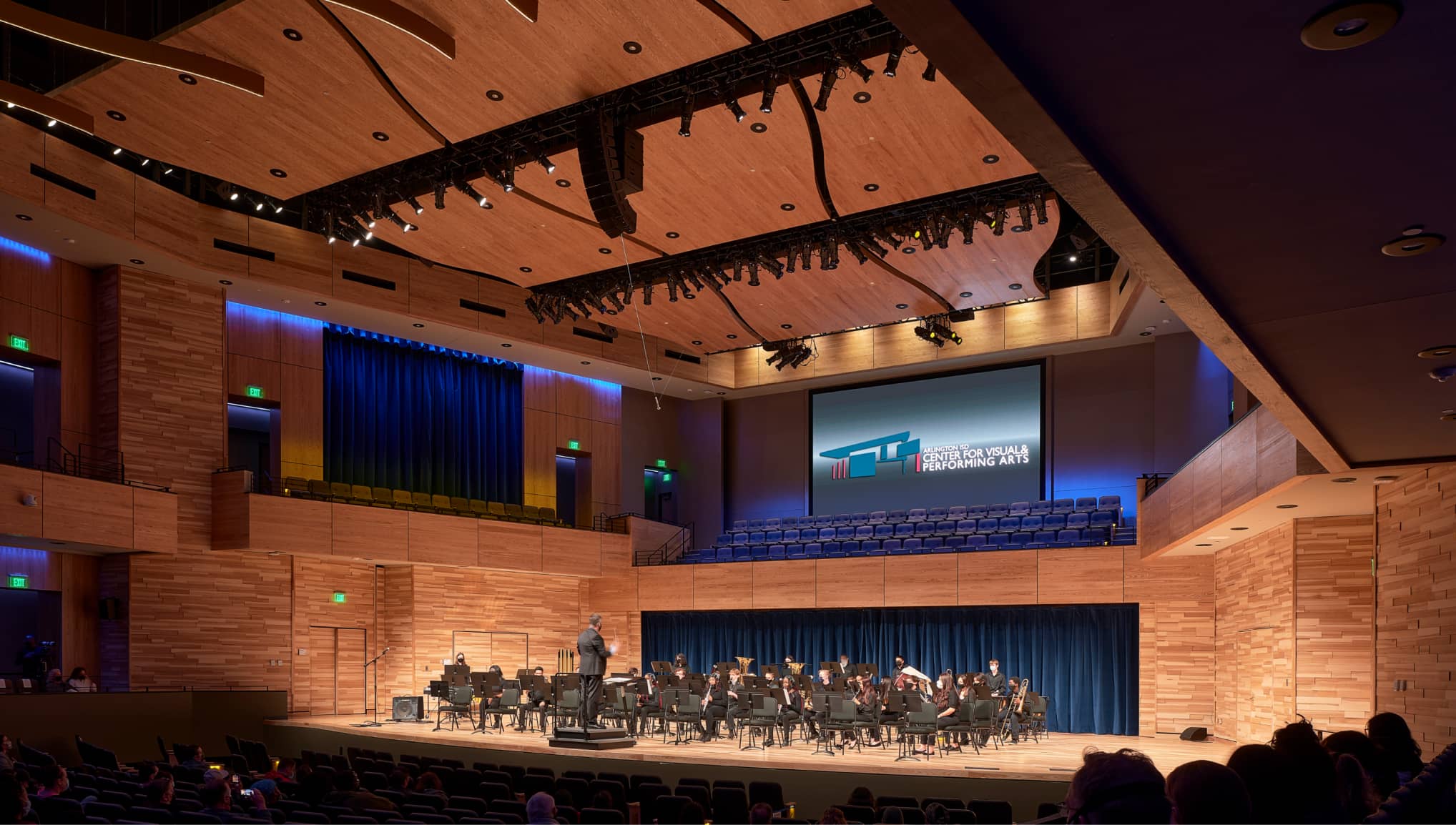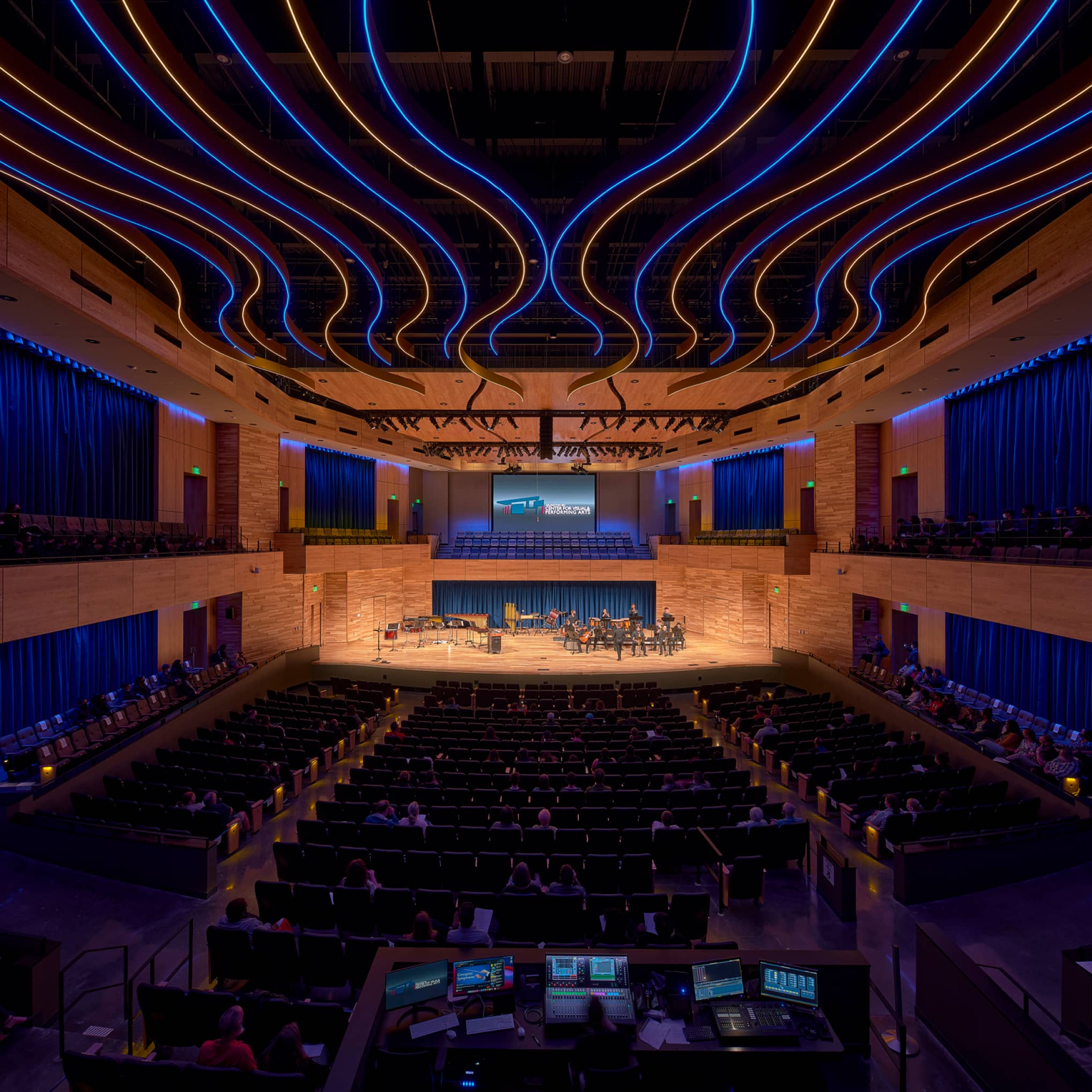
Design for Resources: How a Texas School and Clinic Are Helping Solve Architecture’s Carbon Problem
Compelling statistics that illuminate how buildings contribute to global warming lead to one unmistakable point: designing more carbon neutral or ‘net zero’ buildings is essential for the sustained health of our planet and the people who inhabit it.
Until recently, conversations about achieving net zero primarily focused on ‘operational’ carbon, or the amount emitted into the atmosphere by a building while it’s in use. But that’s only one piece of the puzzle, according to HKS sustainability experts.
“Reducing the operational carbon and energy use of buildings is critical to hitting net zero, but it’s not the only factor that goes into that equation. We also need to consider the embodied carbon of the building,” said HKS Sustainable Design Leader Allison Smith.
Reducing the operational carbon and energy use of buildings is critical to hitting net zero, but it’s not the only factor that goes into that equation. We also need to consider the embodied carbon of the building.
Embodied carbon encompasses the emissions produced during the production of building materials and the construction process. Clients and designers who want to have a real chance at curbing buildings’ impact on the environment must balance these often-overlooked factors with operational emissions to make informed decisions that reduce overall carbon.
“Even if we got to zero operational carbon as a building industry, we would still be using a significant amount of resources…we want to look at everything we can have an effect on and do what we can to reduce both embodied carbon and the operational carbon,” said HKS Global Practice Director, Structures, Dan Getz.
Promoting embodied carbon reduction strategies, AIA’s Framework for Design Excellence urges architects to “Design for Resources” with a particular emphasis on choosing healthy, sustainable building materials. Good design, the Framework describes, “depends on informed material selection, balancing priorities to achieve durable, safe, and healthy projects.” By lessening embodied carbon through tactics like selecting healthy materials, designers can contribute to immediate overall reductions.
During a recent HKS webinar about the “Design for Resources” measure, HKS sustainability leaders said that focusing solely on a project’s aesthetic qualities and performance will not be enough to ensure that our designs can limit environmental impact, withstand significant weather events and contribute to equitable communities.
Better Design with Better Materials
Throughout the webinar, Smith, Getz and Global Practice Director, Education Interiors Adelia Schleusz all shared perspectives on why understanding the relationship between materials and embodied carbon is crucial to the design process. To create healthier environments and communities, designers must become investigators of the materials they specify on a project from timber to synthetics and steel to glass. Every aspect of these materials’ lifecycle — how they are sourced, manufactured, supplied, installed, discarded or recycled — can rack up embodied carbon.
In addition to reducing embodied carbon, specifying truly healthy materials also means eliminating harmful chemicals and reducing the overall amount of materials used in a project, Smith says. By keeping these goals in mind from the start, clients and project teams can deliver healthier spaces for occupants and limit negative environmental impacts.
Decreasing the amount of materials used on a project can also save clients money, says Getz. He routinely conducts Life Cycle Assessments (LCAs) to help determine the best design outcomes that align with client goals and community values, using the data to recommend material selections that reduce both embodied carbon and expenses.
“I think one of the things we can all get behind is that if we’re using less, that’s good for everybody,” he said. “Using less can save the client money because that’s fewer materials we’re having to buy.”
To balance budgets and sustainability goals, HKS designers also leverage our Design Green team’s expertise as well as the mindful MATERIALS library — a materials transparency initiative HKS kickstarted in 2014 that has grown into an industry-wide resource. Driven by a commitment to the UN Global Compact, the 2030 Commitment and achieving carbon neutrality, HKS seeks to reduce embodied carbon and select healthy materials on an increasing number of projects every year.
Enhancing Texas Communities through Sustainability
Taking measures to reduce embodied carbon and select healthy materials is important for many different design disciplines including structures, architecture, interiors and furnishings, fixtures, and equipment. Getz and Schleusz believe that with our diverse architecture, engineering and interior teams, HKS is particularly well suited to make responsible decisions and recommendations.
When working with clients who wish to broaden sustainability and resiliency in their communities, Schleusz takes an integrated approach, starting conversations about healthy materials selection as soon as possible in the design process.
“There’s a little bit of education involved — educating the team and educating ourselves and sharing this evolving knowledge we have in the industry about smart material selection. The key is for all stakeholders to benefit from a deeper level of engagement, be more informed and really think about embodied carbon and using mindful materials,” she said.
Putting our dedication to Design for Resources into action, HKS has created two sustainable, community-centered projects in the greater Dallas region.
Located in the heart of Arlington, Texas’ entertainment district, the new Arlington Independent School District Center for Visual and Performing Arts is set to become a top entertainment venue and education campus in the region. To Schleusz, the project highlights an important link between interior design, sensible resource use and community sustainability.
“Interior raw materials alone are responsible for 20% of the embodied carbon in our buildings,” she said. “We have a responsibility and opportunity to make improvements for sustainable resiliency.”

The HKS team put intentional materials selection at the forefront of their design, including a range of people from the Arlington ISD community in the decision-making process. Learning from those conversations and drawing on their extensive experience working with education clients, Schleusz and her colleagues understood that durability and low maintenance products would be needed to meet the high traffic demands of the school and performance venue. They specified long-lasting, sustainable products including a solid surface concrete flooring with an Environmental Product Declaration (EPD), Crossville porcelain tiles that have a “take back” program for recycling and certified carbon-neutral carpeting from Tarkett. With these and other materials, Schleusz and her team designed an interior experience that honors local materials, building a bridge between specialized craftsmanship, design and the arts.
“We took cues from the creative processes of arts professions, thinking about the movement and shape of the building and how it can support the qualities, patterns and movements that are expressed in the performing and visual arts,” Schleusz said.
With their showstopping design for the building’s 1,200-seat wood-paneled concert hall, the team rose to meet complex acoustic requirements while sourcing materials conscientiously. They selected hardwood from responsibly managed forests and visited the mill where wallcoverings were processed to learn about recycling efforts and the production chain. A renewable resource, wood not only contributes to beautiful and high-performing spaces like the concert hall, but it but can also lead to enhanced health among students and visitors. Biophilic interiors, including ones designed with wood as a primary material, have been proven to decrease stress and anxiety and improve heart health and memory function, Schleusz noted.
Further exemplifying how materials and embodied carbon intersect with health, another HKS project supports its community with sustainable clinical facilities just 20 miles away from Arlington ISD.
Part of Dallas’ Parkland Health and Hospital System, the Moody Outpatient Center serves 800 underserved community members with a broad range of illnesses and conditions. Smith, who served as the project’s sustainable design manager, said that because the patient population is particularly vulnerable, the client was immediately supportive of design strategies that would limit health and environmental impacts.

With 24 multi-specialty clinics, the building encompasses more than 520,000 square feet of patient, visitor and staff areas. Working with project’s engineers, Smith and the HKS team conducted a Whole Building Life Cycle Assessment to model potential embodied carbon reductions. Focusing specifically on adjusting the concrete mixtures needed to support the massive facility’s infrastructure, their analysis resulted in a 17 percent reduction of carbon emissions.
“This is equivalent to more than 8 million miles driven by an average passenger vehicle,” Smith said.
Designed to be flexible, yet durable, the Center’s many waiting areas and clinics incorporate healthy materials that support Parkland’s sustainability commitments while providing a comfortable environment for patients and visitors. The design team specified multiple products with “cradle to cradle” programs — those whose manufacturers are certified for sustainable sourcing and end-of-life recycling — including ceiling tiles and rubber flooring. The flooring is also low-maintenance and free of harmful chemicals, as is the furniture upholstery throughout.
Smith ensured that materials transparency was paramount in the design and delivery of the Moody Outpatient Center. She detailed more than two dozen material ingredients reports and five optimized materials ingredient reports that help the designers and the clients understand what the materials are comprised of and that they’ve avoided hazardous chemicals with their selections.
Taken together, the Parkland Health and Hospital System’s Moody Outpatient Center and the Arlington ISD Center for Visual and Performing Arts set a standard for how healthy materials and reducing embodied carbon can and should be a part of every architectural project. To reach a net zero future that includes improved building performance, human well-being and environmental health, HKS is firmly committed to designing for resources.


